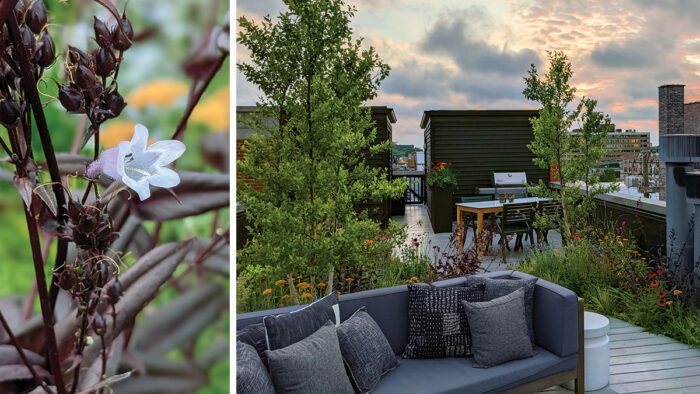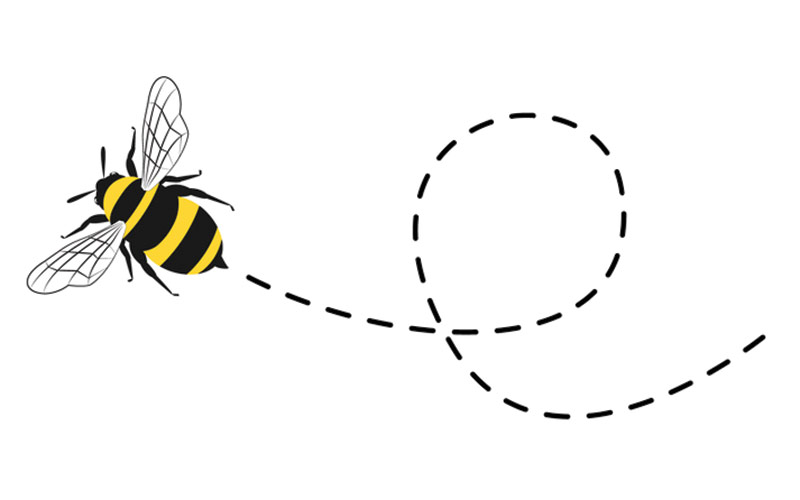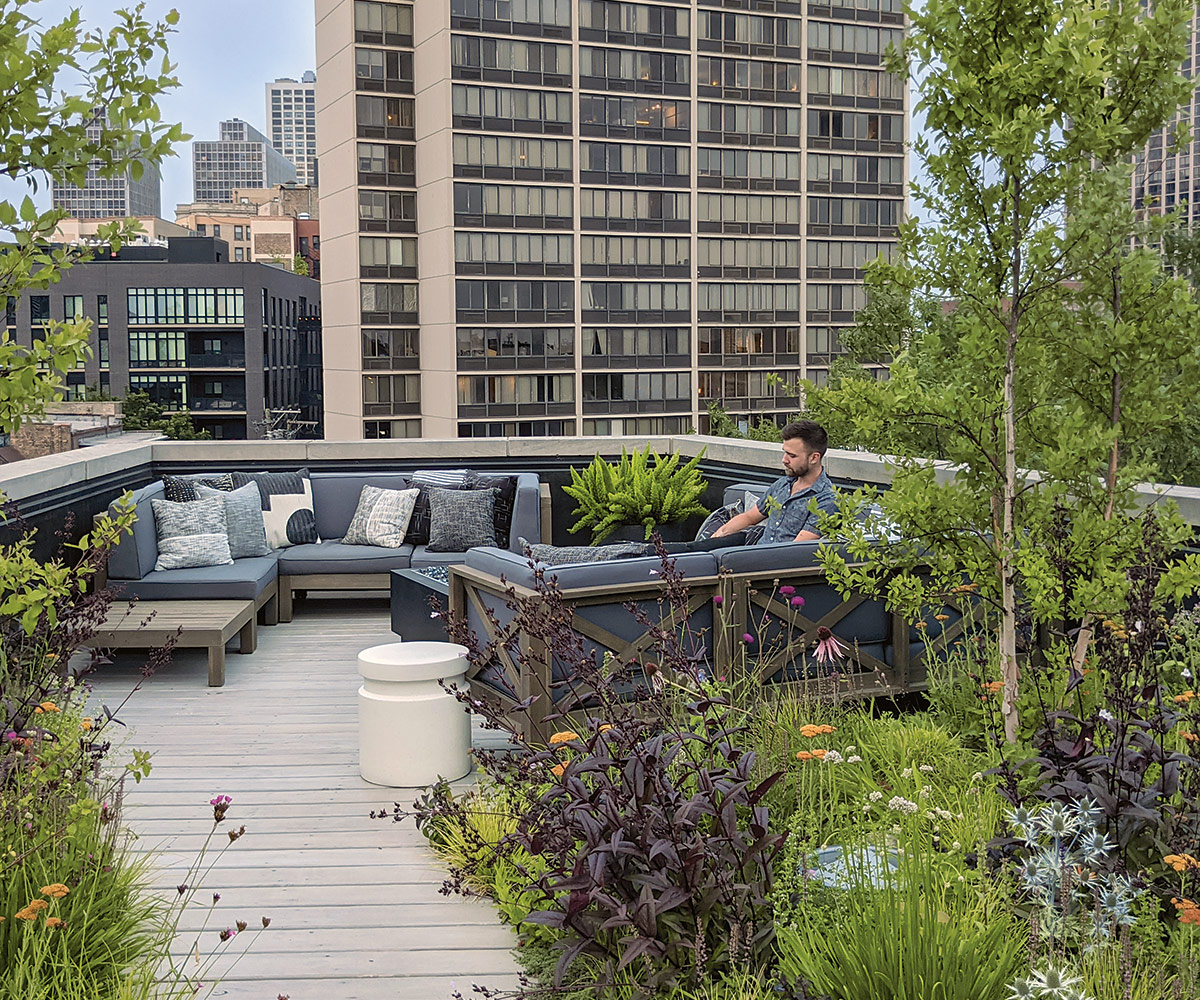
“Can bees even fly that high?” This was a comment made by one of our editors during a planning session for this issue of Fine Gardening. She was referring to the rooftop pollinator garden, which is located atop a multistory apartment building in the middle of Chicago. It is an oasis within a concrete jungle. But does it really attract beneficial insects?
The debate continued, with a couple more staffers chiming in to say that they were sure bees could fly that high in pursuit of food. Others were skeptical.
I too was initially wary of this magical space. It was beautiful. It was unique. But was it truly a spot that provided nourishment to beneficial insects? Having spent many hours in it taking photos, I can now answer, unequivocally, yes. In the predawn light of late summer the beds of this space were teeming with parasitic wasps, native bees, and even a lone praying mantis.
“How on earth . . . ?” I thought to myself while setting up my camera to capture some of the action.
The party didn’t slow down in the evening, although I did spy a few bumblebees asleep on the penstemons, having clearly overindulged at the pollen open bar. After descending the many flights of stairs to the sidewalk below, I was struck by how little insect life was active at street level. The entire experience left me more in awe of what garden designer and owner Hayden Regina had created: a pollinator pit stop in the middle of the third largest city in the United States.
The feat did not occur without sacrifices and challenges, as Hayden writes in his article. He had to give up his ideal color palette, which is generally much more austere. And I cannot even imagine what his chiropractic bill was after lugging every plant, bag of soil, and piece of lumber up to the roof on foot. But he is quick to point out all that he didn’t have to give up in the pursuit of an eco-friendly landscape. He kept two reasonably sized seating areas, placing them at either end of the roof so that the humans didn’t interrupt the pollinators’ activities and vice versa. He was still able to have a multiseason design that looks good year-round—an important factor when you live in the Midwest. And he finds joy in tending the space annually, just like any other garden.

Except that his floats among the clouds.
According to scientists, bees can fly up to 30,000 feet, which is higher than the peak of Mount Everest.
I don’t know if I’d climb a mountain in the Himalayas to take in the beauty of a gorgeous garden, but I’d certainly tackle the stairs of a six-floor walk-up—even if I weren’t guaranteed an open bar at the top.
—Danielle Sherry, executive editor
Learn more:
Read about Hayden’s Pollinator Pit Stop Rooftop Garden
See what plants Hayden found worked great in tough conditions.
Photos, except where noted: Danielle Sherry
Fine Gardening Recommended Products

Spear & Jackson 4930FZ Razorsharp Telescopic Tree Pruner
Fine Gardening receives a commission for items purchased through links on this site, including Amazon Associates and other affiliate advertising programs.

The Crevice Garden: How to make the perfect home for plants from rocky places
Fine Gardening receives a commission for items purchased through links on this site, including Amazon Associates and other affiliate advertising programs.

National Wildlife Federation®: Attracting Birds, Butterflies, and Other Backyard Wildlife, Expanded Second Edition (Creative Homeowner) 17 Projects & Step-by-Step Instructions to Give Back to Nature
Fine Gardening receives a commission for items purchased through links on this site, including Amazon Associates and other affiliate advertising programs.





















Comments
Log in or create an account to post a comment.
Sign up Log in